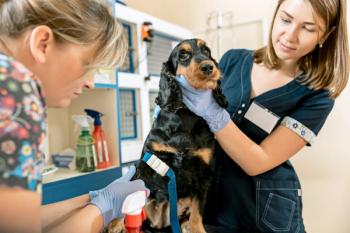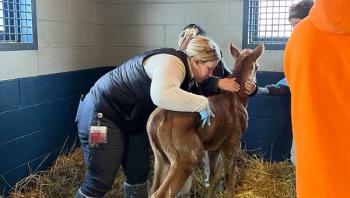
Future of veterinary associations falls to students
Hook them while they are young, and they be loyal.
NATIONAL REPORT — Hook them while they're young and they will remain loyal.
That's the consensus among association leaders on how to increase the number of young members, maintain membership and create the leaders of tomorrow.
Table 1 Most associations follow this pattern
The topic was addressed during the American Veterinary Medical Association's (AVMA) winter conference in January when Dr. Melanie A. Marsden, a practice owner from Colorado Springs, Colo., spoke about how generational differences can impact the future of organized veterinary medicine.
"Who will today's AVMA leaders turn the baton over to?" she asked.
Marsden pointed out that the leadership of the AVMA was predominately white, older men, which is not representative of the profession as a whole.
Getting new members to join associations and retaining them once they are there so they can move up through the ranks to assume leadership positions is the goal of every association.
But it's not always easy to achieve.
While associations like the AVMA, American Association of Bovine Practitioners (AABP), American Association of Equine Practitioners (AAEP), the California Veterinary Medical Association (CVMA) and the American Association of Swine Veterinarians (AASV) all have programs that begin when students are still in veterinary school and that help bolster numbers, retention remains an issue.
One reason is the number of demands on a younger veterinarian's time, says Dr. Gatz Riddell, executive vice president of AABP.
"Organized veterinary medicine takes time and it's not a money-making endeavor," he says. "We can pay for their expenses to come to a meeting, but we can't pay for their time away from the office."
Riddell points out that members of the AVMA's board of directors probably spend 40 to 50 days a year away from practice, which is just not feasible for a young vet just starting out.
In addition, the generation that is in veterinary school right now is not described as joiners.
"We just have to try to make the associations more relevant to a more diverse generational profile," Riddell says.
That diversity is beginning to shine through.
"If you look at the demographics, people in their 50s and 60s, when they were back in veterinary school, it was primarily male and primarily Caucasian. We're going to see these demographics changing. We've got some extremely active, young AABP members."
So does AASV, which executive director Dr. Thomas J. Burkgren attributes to early recruitment.
"We've found by attracting student members and getting as many of them exposed to AASV as soon as possible while they're in school, when they graduate they will join," he says. "We were at an all-time high with the number of student members this year."
He attributes the increase to more involvement with students at the annual AASV meeting, more opportunities for externships and scholarships.
AASV, along with many of the other veterinary associations, also offers complimentary membership for the first year after graduation.
"If they become a member as a student and become a member as a new graduate, as long as they stay in swine, we keep them," Burkgren says. "Part of that is the result of building relationships while they are in school."
Currently, AASV does not have a lot of female members in leadership, but the female members the association does have are active.
"The female members we do have tend to be younger," Burkgren notes. "There are certainly challenges from a time commitment standpoint. That progression to leadership is a little more difficult for younger members because of that."
Making sure that associations ask questions of students and young members is key to creating that path to leadership, says Dr. Bill Grant II, president of the CVMA.
"At this point, we seem to be fairly successful in obtaining and maintaining younger associates," Grant says. Programs with the two veterinary colleges in the state and free association membership and liability insurance for new members are important components of that. So is talking to young members.
"A lot of us in leadership have been out of school 15 to 20 years and things change," he says. "We have to show them that we are flexible. We are able to change."
One way to do this is making classes available online, he says.
"We reach out and give them what they need as students, and ask them what do we need to do?" Grant says. "If you don't reach out while they are in school, you won't be as successful post-graduation."
The AAEP has no problem getting new members or retaining older members. It's the group in between that seems to slip away.
"Our efforts are really focused at the veterinary-school level and nurturing students after graduation," says Sally Baker, AAEP director of marketing and public relations.
While the association has not studied why that middle group seems to fall away from membership, Baker says lots of issues likely factor in, including time, family and money.
Still, AAEP leadership, while not reflective of membership, is getting more balanced.
Four board members out of a possible 14 are female, while membership is 58 percent male and 42 percent female.
Last year, the association even had its first female president.
"Where our profession was male-dominated, it is now female-dominated," she says. "Those who have been eligible for leadership have been predominately male historically, but I feel like we are going in the right direction."
Newsletter
From exam room tips to practice management insights, get trusted veterinary news delivered straight to your inbox—subscribe to dvm360.




